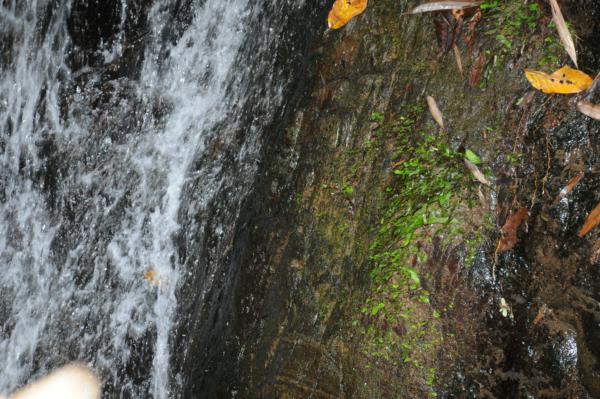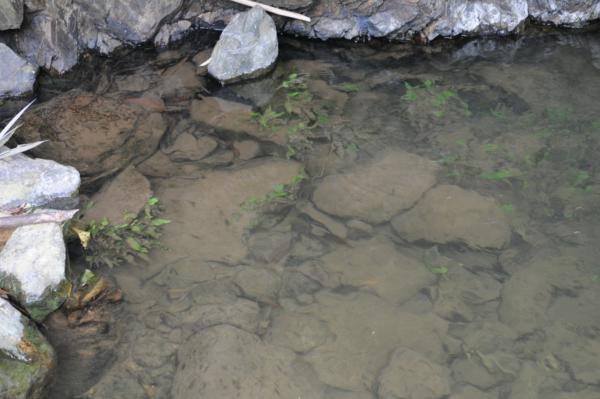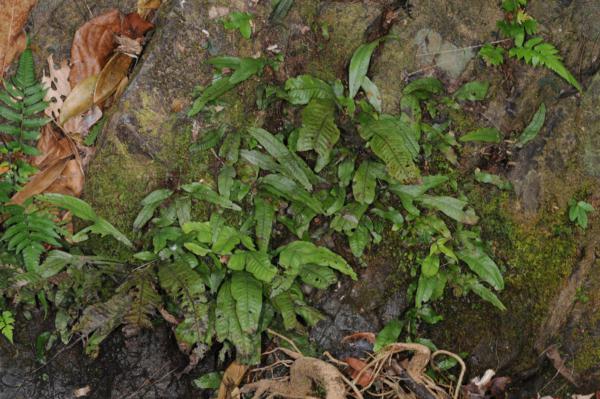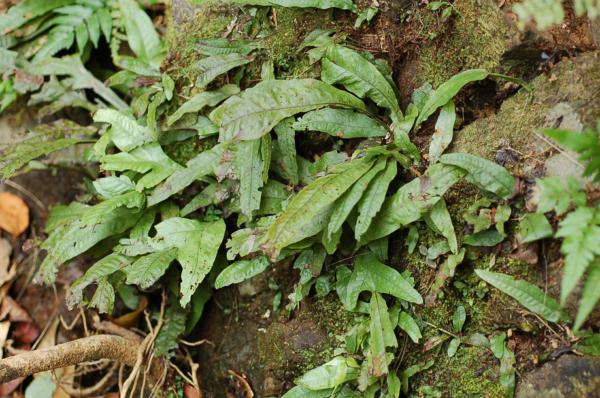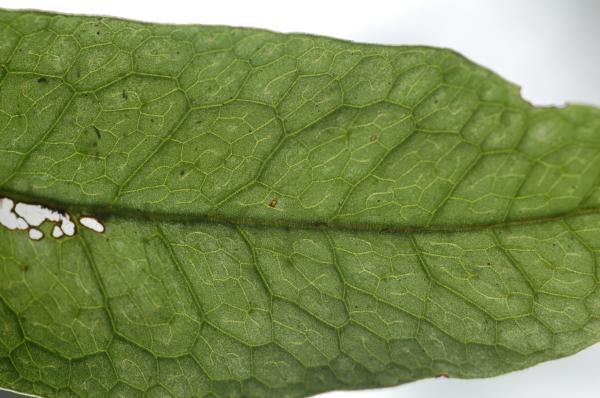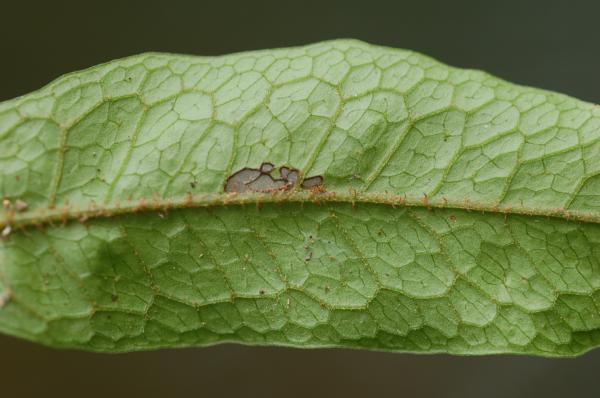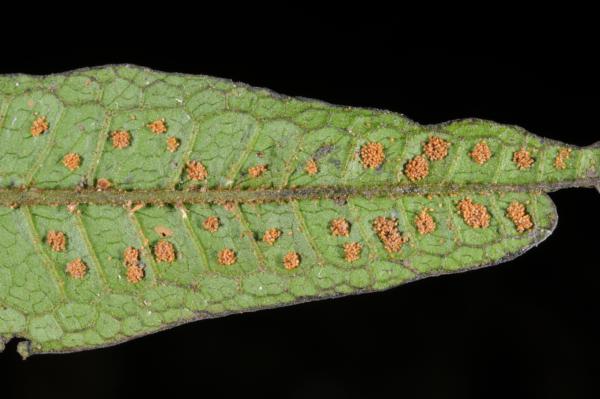
Microsorum pteropus (Blume) Copel.
Family
Polypodiaceae
Nomenclature
Microsorum pteropus (Blume) Copel., Univ. Calif. Publ; Bot. 16: 112. 1929; Ching, Bull; Fan Mem. Inst. Biol. 4: 312. 1933; Tardieu & C.Chr in Fl. Indo-Chine 7(2): 484. 1941; Holttum, Rev. Fl. Malaya ed. 1, 2: 172, f. 80. 1955 [‘1954’]; Holttum, Dansk Bot. Ark. 23: 230. 1965; Tagawa & K.Iwats., SouthE. Asian Stud. 3(3): 77. 1965; Tagawa & K.Iwats., SouthE. Asian Stud. 5: 53. 1967; Tagawa & K.Iwats., Fl. Thailand 3: 529. 1989; Nooteboom, Blumea 42: 350. 1997; Bosman et al., Fl. Males., Ser. II, Ferns and Fern Allies 3: 120. 1998; Boonkerd & Pollawatn, Pterid. Thailand: 280. 2000. – Polypodium pteropus Blume, Enum. Pl. Javae 125, add. 3. 1828; Blume, Fl. Javae Fil.: 168, t. 76. 1829. – Pleopeltis pteropus (Blume) Bedd., Handb. Ferns Brit. India: 359, f. 203. 1883. – Colysis pteropus (Blume) Bosman, Leiden Bot. Ser. 14: 112. 1991. – Leptochilus pteropus (Blume) Fraser-Jenk., Taxon. Revis. Indian Subcontinental Pteridophytes : 62. 2008. – Type: Java, Blume s.n. (L).
Pleopeltis pteropus var. minor (Bedd.) Bedd., Suppl. Ferns S. Ind.: 23. 1876. – Microsorum pteropus var. minor (Bedd.) C. Chr. & Tardieu, Notul. Syst. (Paris) 8: 194. 1939; Tardieu & C.Chr., Fl. Indo-Chine 7(2): 485. 1941.
Description
Rhizome long creeping, 1–5 mm diam., bearing fronds rather closely spaced, densely scaly; scales oblong-lanceolate, gradually narrowing towards apex, round at base, 1.5–5 by 0.4–1.5 mm, brown, distinctly clathrate, the cells rather regularly arranged longitudinally, the margin entire. Stipes 0.5 mm or so apart from the next ones, stramineous, with the scales like those on rhizome but smaller in size, 0–28 cm long, winged on upper portion. Laminae simple to trifoliate, simple laminae broadest in lower portion, narrowing towards attenuate base, decurrent downwards as wings of stipes, narrowing towards attenuately very long-acuminate apex, entire, 3.5–45 by 0.2–25 cm, the lateral lobes of trifoliate laminae various in size and form, rarely almost the same as the terminal lobes, usually narrower, terminal lobes like simple laminae; midrib raised on both surfaces, more or less minutely scaly, lateral main veins distinct beneath, the other veins hardly visible or distinct, anastomosing with a row of main areoles along both sides of midrib and many smaller areoles in irregular arrangement; thinly papyraceous to herbaceous, dark green to blackish in colour. Sori round to more or less elongate, many, irregularly scattered on the under surface of laminae .
Distribution in Thailand
NORTHERN: Chiang Mai, Chiang Rai, Lampang, Tak, Phitsanulok; NORTH-EASTERN: Loei; EASTERN: Buri Ram, Chaiyaphum; SOUTH-WESTERN: Ratchaburi, Kanchanaburi, Phetchaburi, Prachuap Khiri Khan; CENTRAL: Saraburi, Nakhon Nayok; SOUTH-EASTERN: Chanthaburi, Trat; PENINSULAR: Chumphon, Ranong, Surat Thani, Nakhon Si Thammarat, Trang, Satun, Yala.
Distribution in Laos
Khammouane, Savannakhet, Vientiane.
Wider Distribution
India to Malesia, north to S China and the Ryukyus.
Ecology
On wet rocks in stream-beds in dense gloomy forests at low to medium altitudes less than 800 m alt., usually in spraying water, not so rare throughout the country. They can also survice submergence for some time.
Proposed IUCN Conservation Assessment
Least Concern (LC). This species is common and widespread and not under any known threat.
Notes
The lobing of fronds is very variable and there are colonies including only the simple form though this is cannot be distinguished as a variety. The venation is rather peculiar: the main lateral veins form a row of main areoles including many smaller areoles, and at the outside of the main areoles there are smaller ones with veins more distinct than those of included smaller areoles. The sori are sometimes elongate to form areoles, usually only in the main areoles .
Voucher specimens - Thailand
Middleton et al. 4637, Trat, Namtok Khlong Kaeo National Park (E).Voucher specimens - Laos
Maxwell 99-120, Vientiane (CMU); Maxwell 07-322, Savannakhet (CMU)
Habitat
Toleration of submersion
Habit
Habit
Venation
Lower frond surface
Lower frond surface
Sori
Site hosted by the Royal Botanic Garden Edinburgh. Content managed by Stuart Lindsay, Gardens by the Bay, Singapore and David Middleton, Singapore Botanic Gardens. Last updated 24 January 2012
